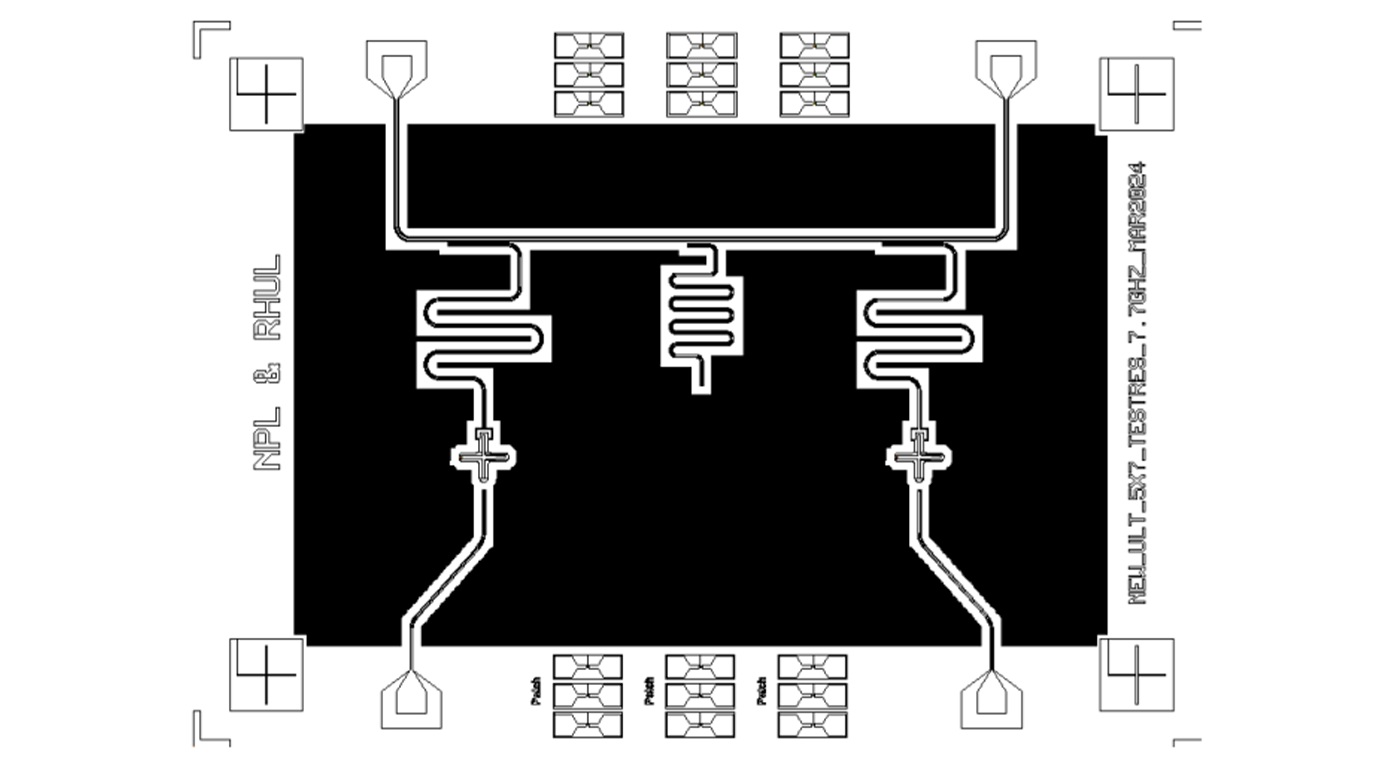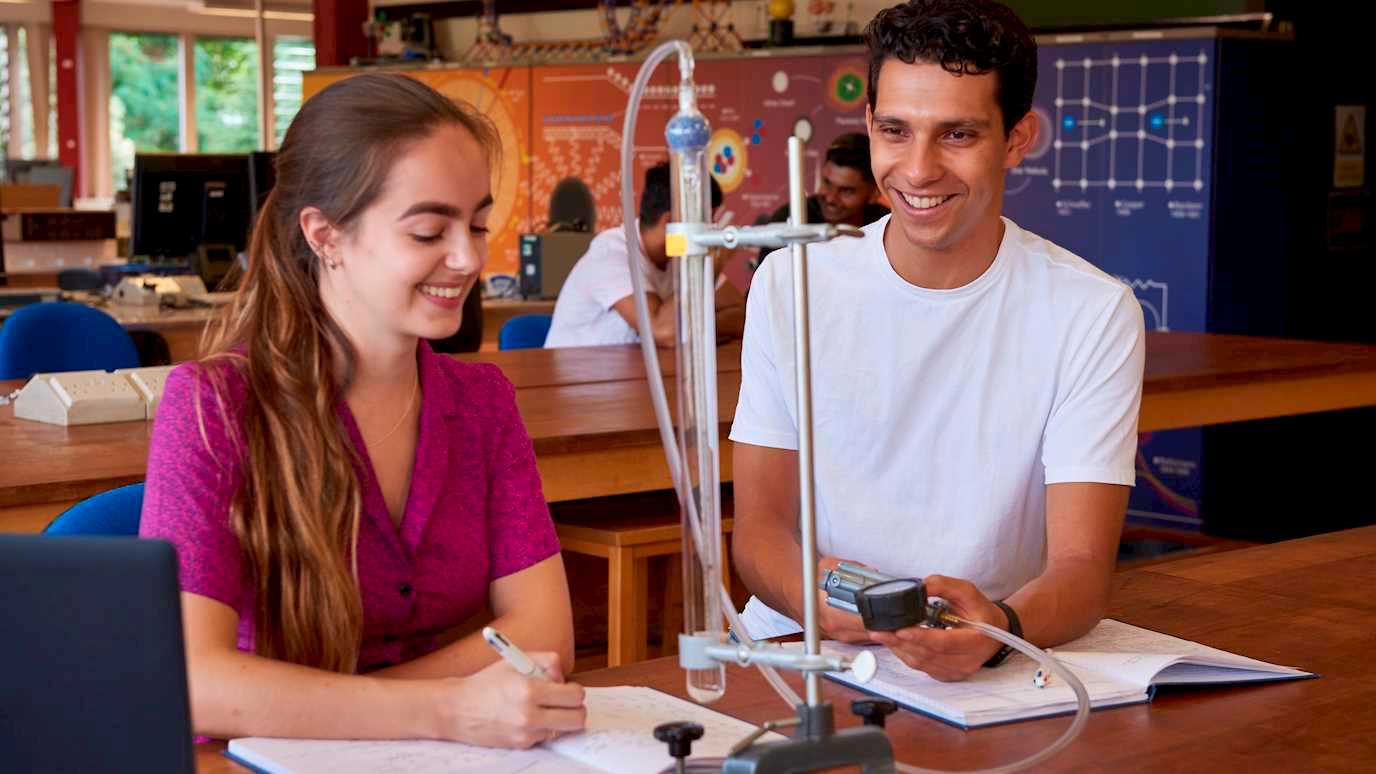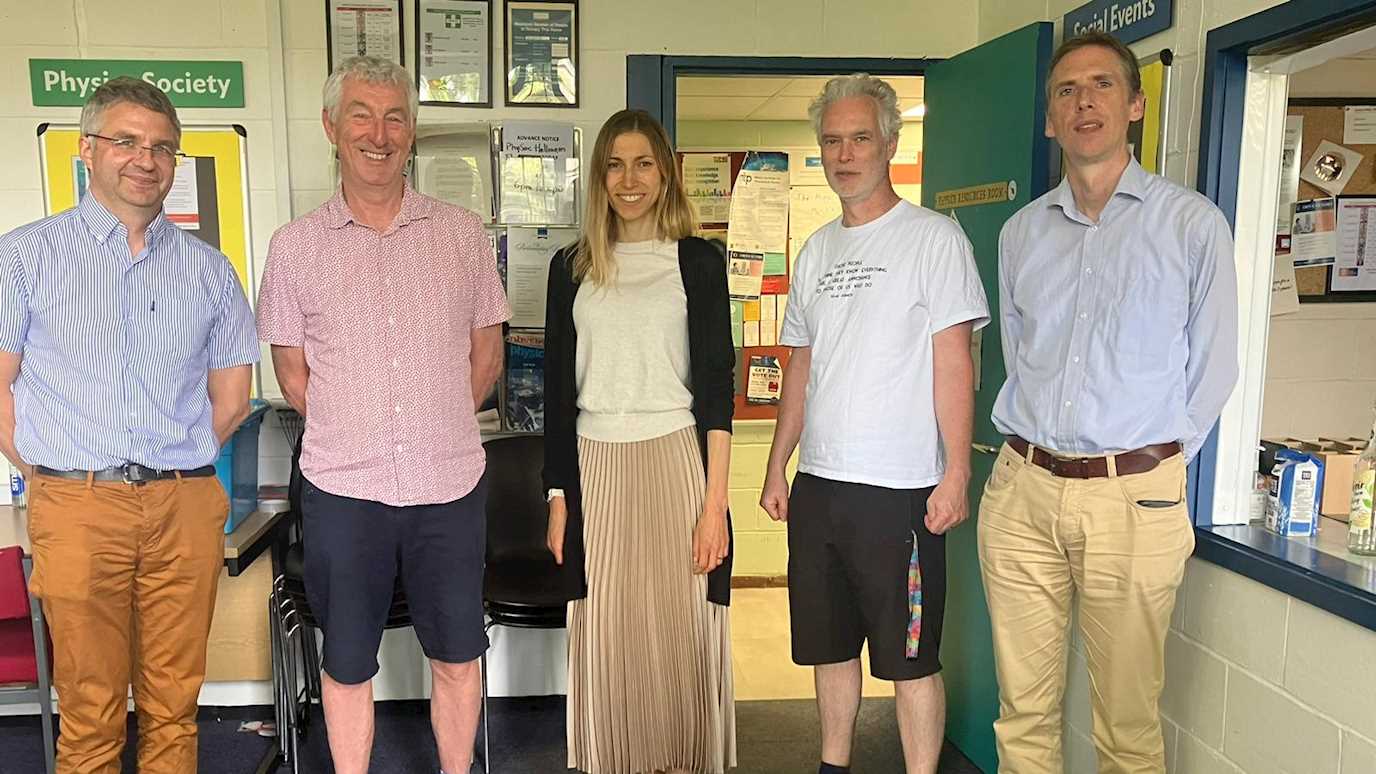When we consider the most inspiring space missions in history, Apollo 11 definitely makes the cut. Before the 1960’s, the concept of sending humans to space seemed like wishful thinking. Now, almost 60 years later, NASA is planning to send humans to the Moon again.
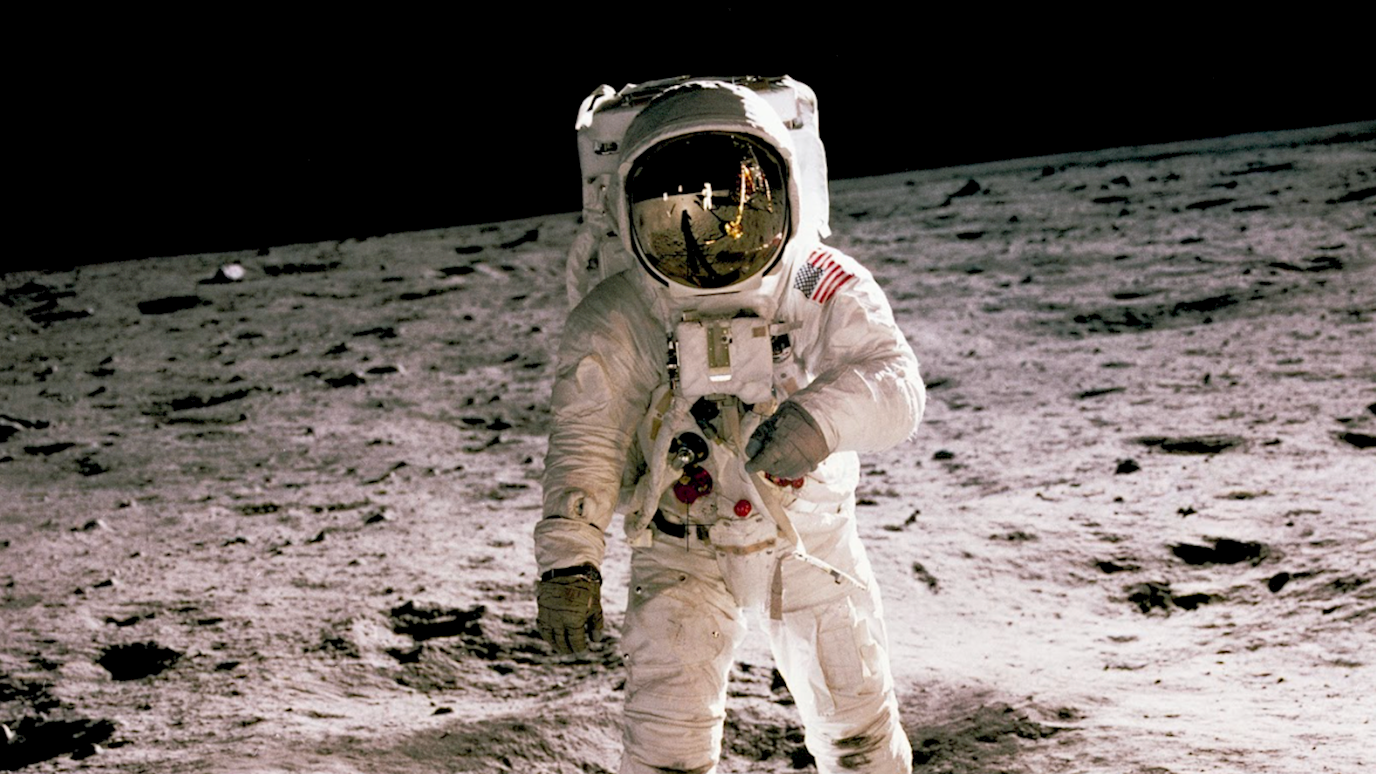
Buzz Aldrin walks across the surface of the Moon. His footprints are marked in the powder and he wears a white space suit.
On April 12th 1961, Soviet cosmonaut Yuri Gagarin broke the boundaries of human capability by becoming the first man in space. This marked a significant milestone in the Space Race and, on May 25th that year, US President John F. Kennedy responded by raising the stakes:
“I believe that this nation should commit itself to achieving the goal, before this decade is out, of landing a man on the moon and returning him safely to Earth.”
Only 8 years after this challenge was set, on July 20th 1969, Apollo 11’s Eagle lunar module landed in the Sea of Tranquillity. Today, we commemorate the ground-breaking work of the NASA team and the crew: Neil Armstrong, Buzz Aldrin and Michael Collins.
Armstrong and Aldrin became the first human beings to explore an unfamiliar world with a 2.5 hour spacewalk. During this time, the astronauts gathered rock samples, set up experiments to test the solar wind and took photos of their surroundings. In a report back to Mission Control, Armstrong describes the lunar material to cover the surface “in fine layers like powdered charcoal”. Their first steps on the Moon were broadcast and viewed on Earth by over half a billion people.
The success of Apollo 11 paved the way for subsequent missions in the program, resulting in a further 10 astronauts exploring the Moon. Apollo 17 was the last of its kind; upon the crew’s exit from the lunar surface, commander Gene Cernan said: "We leave as we came and, God willing, as we shall return, with peace, and hope for all mankind". 50 years after the Apollo program ended, the Artemis program is making its first preparations to send humans back to the Moon.
The Age of Artemis
NASA’s Artemis program has three major stages, culminating in establishing a significant human presence on the Moon. The challenges we overcome during this program will shape our plans to send humans to Mars in the future.
The program begins with Artemis I, an uncrewed test of the Orion spacecraft and Space Launch System (SLS). The SLS is the world’s most powerful rocket, capable of carrying humans further into space than we have ever been. This flight will be unmanned, so we can test the integral systems with a reduced risk. Orion will travel 280,000 miles from Earth and enter a retrograde orbit around the Moon much wider than that of Apollo 11’s Columbia module. After 4 to 6 weeks, Orion will return to Earth with a splashdown in the Pacific Ocean. NASA has recently completed the Artemis I Wet Dress Rehearsal (a countdown test with a fully-fuelled rocket), meaning the earliest launch date will be in late August 2022.
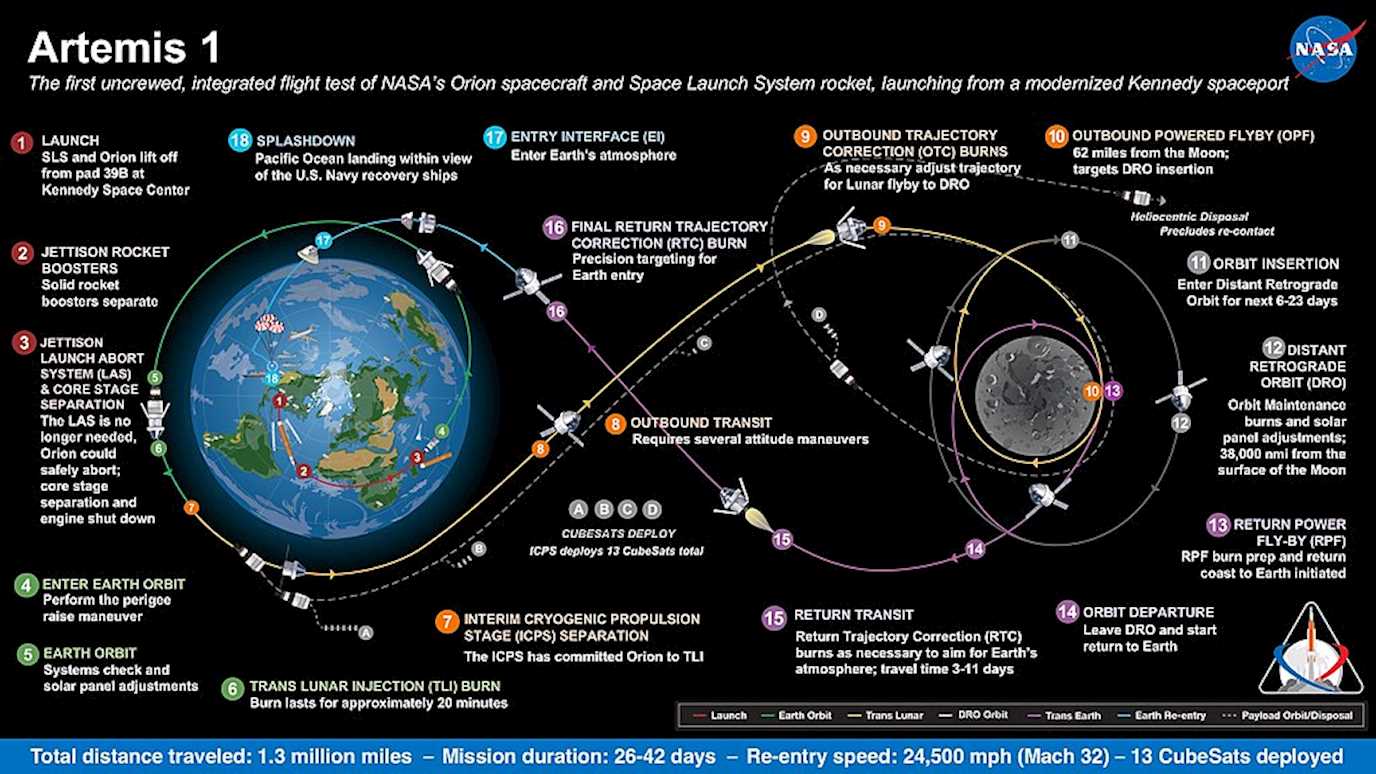

A map showing the flight path of the Orion spacecraft as it travels to the Moon, enters a retrograde orbit 38,000 nautical miles from the lunar surface, and finally loops back to Earth.
Artemis II will be the first crewed mission to the Moon since Apollo 17. It will follow a very similar flight path to that of Artemis I, except it will complete a flyby rather than entering lunar orbit. Artemis mission manager, Mike Sarafin, said that “This mission will prove Orion’s critical life support systems are ready to sustain our astronauts on longer duration missions ahead and allow the crew to practise operations essential to the success of Artemis III.” Currently, it is scheduled to be launched in May 2024.
The program will reach its climax by landing the first woman and person of colour on the Moon’s South Pole with Artemis III in 2025. If this initial mission is successful, NASA plans to send crews to the Moon annually for stays that gradually increase in length. Two key aspects of this are the Gateway and the Artemis Base Camp.
Gateway will orbit the Moon, acting as the transfer centre for astronauts leaving Earth in the Orion Spacecraft and reaching the Moon’s surface with the Human Lander System (HLS). It provides greater flexibility for missions, as we will be able to launch from Gateway to explore different regions of the Moon. It also encourages greener space travel, because the HLS can be reused in transfers to the surface.


A diagram of the Gateway with the Orion Capsule docked in the East and the Human Lander System docked in the South. Different elements of the spacecraft will be built by NASA, ESA, JAXA and private companies.
Artemis Base Camp is NASA’s vision of a fixed habitat on the Moon for a crew of 4 astronauts. It has been proposed to include a modern lunar cabin, a rover and a mobile home. While early missions will involve short stays in the HLS, the project will build-up to a two month residency as the Base Camp develops. One such development is in a ‘nuclear fission surface power unit’ able to provide 10kW power to the Camp.
By learning to survive on another world, we can prepare ourselves to face the next frontier in space exploration: sending humans to Mars and ensuring their long term survival.










